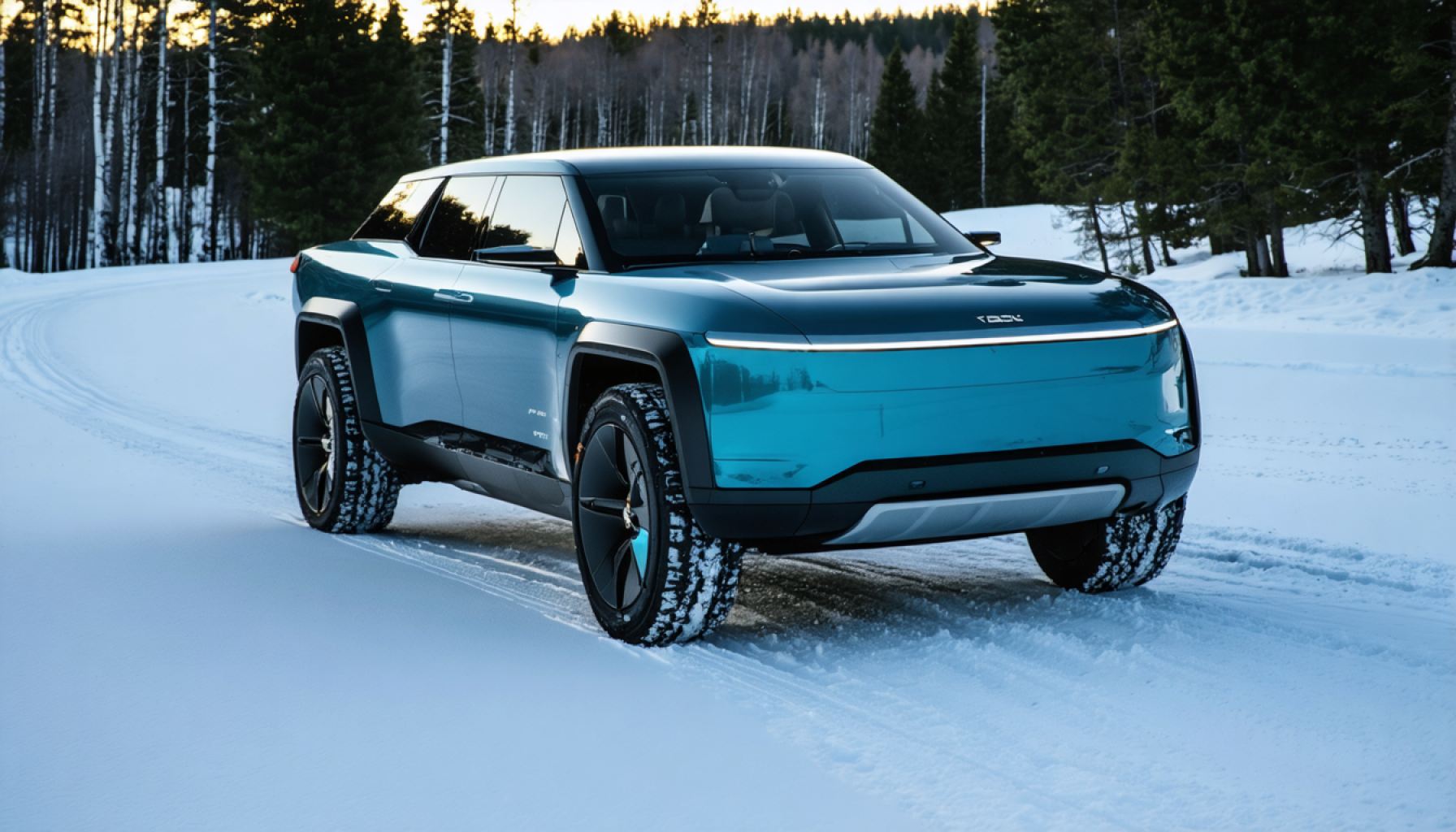- Rivian’s Q1 delivery numbers fell to 8,640 vehicles from 14,183 in the previous quarter, reflecting a strategic realignment rather than decline.
- Production increased to 14,611 vehicles, up from 12,727, aligning with Rivian’s annual production target of 46,000-51,000 units.
- The reduced deliveries are linked to adjusted commitments to key partner Amazon, emphasizing a balanced vehicle portfolio strategy.
- Rivian’s stock dipped by 2.8% to $11.21, largely due to broader market reactions to tariff changes rather than company-specific issues.
- The company’s long-term vision remains focused on innovation, sustainability, and strategic scaling, suggesting potential growth despite current challenges.
In a dramatic sweep of the automotive landscape, Rivian’s recent first-quarter report painted a stark comparison against the previous year’s final quarter. The innovative vehicle producer delivered 8,640 electric vehicles, highlighting a palpable dip from the 14,183 delivered during the preceding period. Yet, beneath the surface of these figures lies a narrative of strategic realignment rather than retreat.
Against the backdrop of gleaming production lines in Normal, Illinois, where buzz and clamor are constants, workers managed to churn out 14,611 vehicles—a notable increase from the 12,727 crafted in the last quarter of 2024. This production uptick subtly underscores Rivian’s robustness in meeting its lofty annual production targets, which they reaffirmed, still expecting to deliver between 46,000 and 51,000 units this year.
While some eyebrows may rise over the reduction in delivery numbers, the shift mirrors Rivian’s forward-looking adjustments regarding Amazon, a key partner. The company had previously hinted at a tapering in deliveries specific to Amazon’s delivery vans. This strategic pivot maintains their focus on a balanced vehicle portfolio, ensuring sustainability and growth aren’t compromised by singular demands.
The stock market, as unpredictable as a thunderstorm in spring, witnessed Rivian’s stocks dip by nearly 2.8%, closing at $11.21 a share. This decline, however, syncs more broadly with market reactions to tariff shakeups than Rivian’s quarterly stats. The company’s foundational resilience remains unsullied in the face of such financial fluctuations.
Come May 6, all eyes will turn to Rivian as it unveils its first-quarter financial results. Despite short-term variables, the company’s long-term vision, fuelled by a relentless drive for innovation and adaptation, seems unwavered.
For a company cemented in the ethos of revolutionizing mobility, Rivian’s story this quarter suggests that its current trajectory—one of measured scaling and strategic partnerships—is as much about carving a sustainable road forward as it is about immediate gains. The EV titan appears poised to transform the current lull into a leap, reinforcing that a pivotal year could still be written in their favor.
Rivian’s Strategic Shift: Is the Future of Electric Vehicles Shifting Gears?
Rivian’s Strategic Realignment: A Deeper Dive
Rivian, a key player in the electric vehicle (EV) industry, has made headlines with its recent first-quarter report. The numbers reveal a decrease in vehicle deliveries to 8,640—down from 14,183 in the final quarter of the previous year. However, these figures are part of a broader strategic realignment, signaling Rivian’s focus on sustainability and balanced growth.
Behind the Numbers: Production and Strategic Partnerships
– Production Increase: Despite the dip in deliveries, Rivian successfully produced 14,611 vehicles, an increase from the 12,727 produced in the last quarter of 2024. This highlights the company’s operational efficiency and ability to meet its annual production goals of between 46,000 and 51,000 units.
– Partnership Adjustments: A key aspect of Rivian’s strategy involves adjusting its delivery commitments with Amazon, its major partner for electric delivery vans. This recalibration aims to keep Rivian’s production portfolio diverse and not overly reliant on one customer.
Market Reactions and Financial Outlook
– Stock Market Volatility: While Rivian’s stock saw a slight dip of 2.8%, closing at $11.21, this reflects broader market tendencies rather than company-specific issues. Analysts suggest that this fluctuation aligns with market responses to tariff uncertainties.
– Upcoming Financial Results: Investors are anticipating Rivian’s first-quarter financial outcomes on May 6. The results will shed light on the company’s financial health and strategic direction.
The Bigger Picture: Industry Trends and Innovations
– Electric Vehicle Trends: The EV market continues to grow, with an emphasis on sustainability and innovation. According to a 2023 McKinsey report, global EV sales are projected to reach 31 million units by 2030, driven by technological advancements and supportive government policies.
– Rivian’s Innovations: Rivian remains at the forefront of EV innovation, striving to enhance vehicle performance, battery efficiency, and autonomous driving features. Their R1T and R1S models have received positive reviews for their design and off-road capabilities.
Pressing Questions and Insights
– Why the Delivery Reduction? Rivian’s reduced deliveries are a strategic move to diversify its clientele and avoid overcommitment to any single partner—demonstrating its commitment to a sustainable production model.
– Long-term Vision: Rivian’s focus is on long-term growth rather than short-term volatility. By refining its partnerships and production strategies, the company positions itself for future success in a rapidly evolving EV landscape.
Actionable Recommendations
1. Stay Informed: Keep an eye on Rivian’s May 6 financial results to better understand their market trajectory and strategic decisions.
2. Consider Diversification: For investors, consider Rivian’s approach to diversifying its customer base as a model for managing risk in your investment portfolio.
3. Monitor Industry Trends: Stay updated on EV industry trends, which are poised for significant growth and technological advancements.
For more information about Rivian and the EV industry, visit Rivian and explore their latest developments and offerings.
